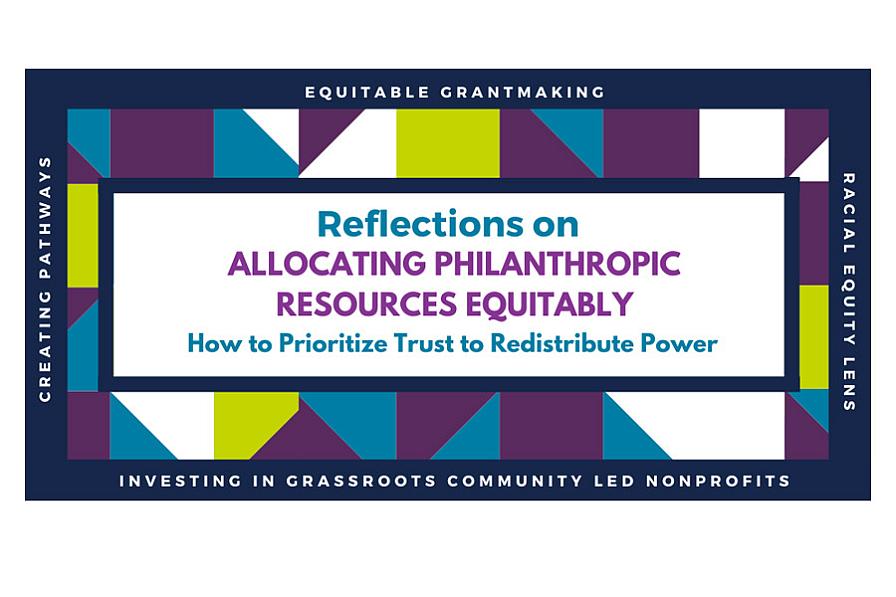
For some time now, and particularly over the course of the past year and some, we in this country have been faced with jarring realities about the state of power, justice, and systemic inequities. As we work toward finding solutions for many of the problems that have come to the forefront as a result of the pandemic and a reinvigorated civil rights movement, it is important that we reckon with our individual (and collective) roles within these systems. In particular, as participants in the philanthropic sector (especially as funders) it is paramount that we understand how money and power go hand-in-hand, and how elements like race contribute to the distribution of resources.
On June 22, the Social Innovation Forum hosted “Allocating Philanthropic Resources Equitably,” as a part of SIF’s ongoing funder education programming. The event was presented as a moderated conversation between Karla Nicholson of the Haymarket People’s Fund, and Damian Wilmot of the New Commonwealth Fund, to discuss their experiences with philanthropic giving and more equitable distribution of resources.
Right off the bat, it was refreshing to hear about equitable grant-making practices from people of color actively working in philanthropy.
...the key to implementing best practices for equity in philanthropic giving is to recognize that, given the systems we live and work in, philanthropy is inherently inequitable.
In fact, it can be argued that philanthropy exists to perpetuate many of the systemic inequities that put historically marginalized communities at a disadvantage. As such, participating in equitable philanthropy requires intentional work — particularly on the part of funders — in order to start breaking these cycles.
Quantifying the divide
According to a study conducted in 2014 by the D5 Coalition, more than 90 percent of charitable foundation CEOs and Presidents are white. The study further details that more than 80 percent of other full-time executive staff is white, as well as more than 65 percent of program officers.
In comparison to these numbers, a further study conducted by Bridgespan found that organizations led by people of color received unrestricted assets that were 76% smaller than White-led organizations. The D5 Coalition study also found that only approximately seven percent of overall grant funding from such foundations go to ethic or racial minorities (Black- and Brown-led organizations and communities). Moreover, less than eight percent of funding goes to women and girls, only six percent goes to people with disabilities, and less than one half percent goes to the LGBTQ+ community.
For the most part, though objectively staggering, these numbers are not all that surprising to me, or to anyone working to equalize power dynamics and funding distribution in the philanthropic sector. The reality, after all, is that even in today’s more progressive philanthropic sector, White people (largely White men) continue to hold the most money and power, while Black, Brown, and Indigenous people continue to be passed over for financial support in uplifting their communities through grassroots organization and nonprofit work. More than anything, these numbers are more than enough motivation for anyone involved in philanthropy to start figuring out how to dismantle some (if not all) of the power structures that produce and perpetuate such statistics.
Putting trust into action: How to move forward
The first step toward integrating equitable grant-making practices is for funders to build relationships and cultivate trust with organizations they want to fund. Funders must recognize that nonprofit leaders, more often than not, know what their communities need and how to best disseminate funding to meet those needs. It follows, then, that funders must trust these leaders enough to not only give them funding but also to make the decisions as to how to use it.
Relationships and trust are two-way streets. Yes, it is imperative that the funders trust their grantees to allocate funding appropriately. However, it is equally important — perhaps more so — that nonprofit leaders and community organizers trust their sources of funding. Grantees must be comfortable with their donor’s transparency, ability to share and/or give up power, and investment in their success. Funders must actively make an effort to listen to and learn from their grantees, and adjust their giving practices accordingly.
Pledging to give to organizations led by historically marginalized individuals and groups is no longer enough to truly challenge and dismantle philanthropic power dynamics. As stated by Karla and Damian, relational, trust-based philanthropy is essential to shifting power and building foundations for long-term philanthropic success.
About the Author: Aditi is the Social Justice Philanthropy Fellow at the Social Innovation Forum, where she works on cultivating Funder Education programming and materials. She is passionate about integrating more equitable practices in the philanthropic sector, particularly with an anti-racism lens. Aditi is studying for her Master's in Public Administration at Northeastern University with expected graduation in May 2022.
“Allocating Philanthropic Resources Equitably'' was an event put on as part of the Social Innovation Forum’s Funder Education programming. Funder Education at SIF is focused on engaging our funder community in continued learning about how to make grantmaking, and philanthropy as a whole, more equitable and accessible. Our next Funder Education event is a conversation about equitable grantmaking practices with Meg Massey and Ben Wrobel, authors of “Letting Go: How Philanthropists and Impact Investors Can Do More Good by Giving Up Control”. This event will take place on September 21 at 1 pm.
 Social Innovation Forum
Social Innovation Forum